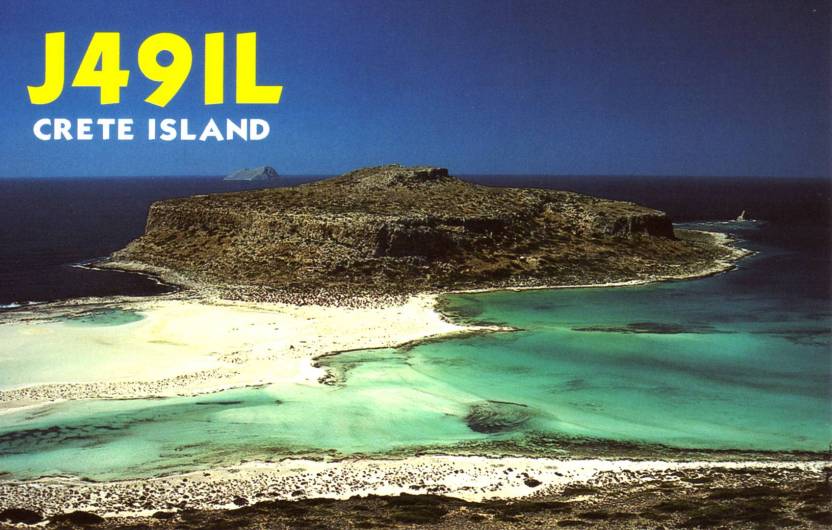MY MOST MEMORABLE QSO WITH
K L 7 X X
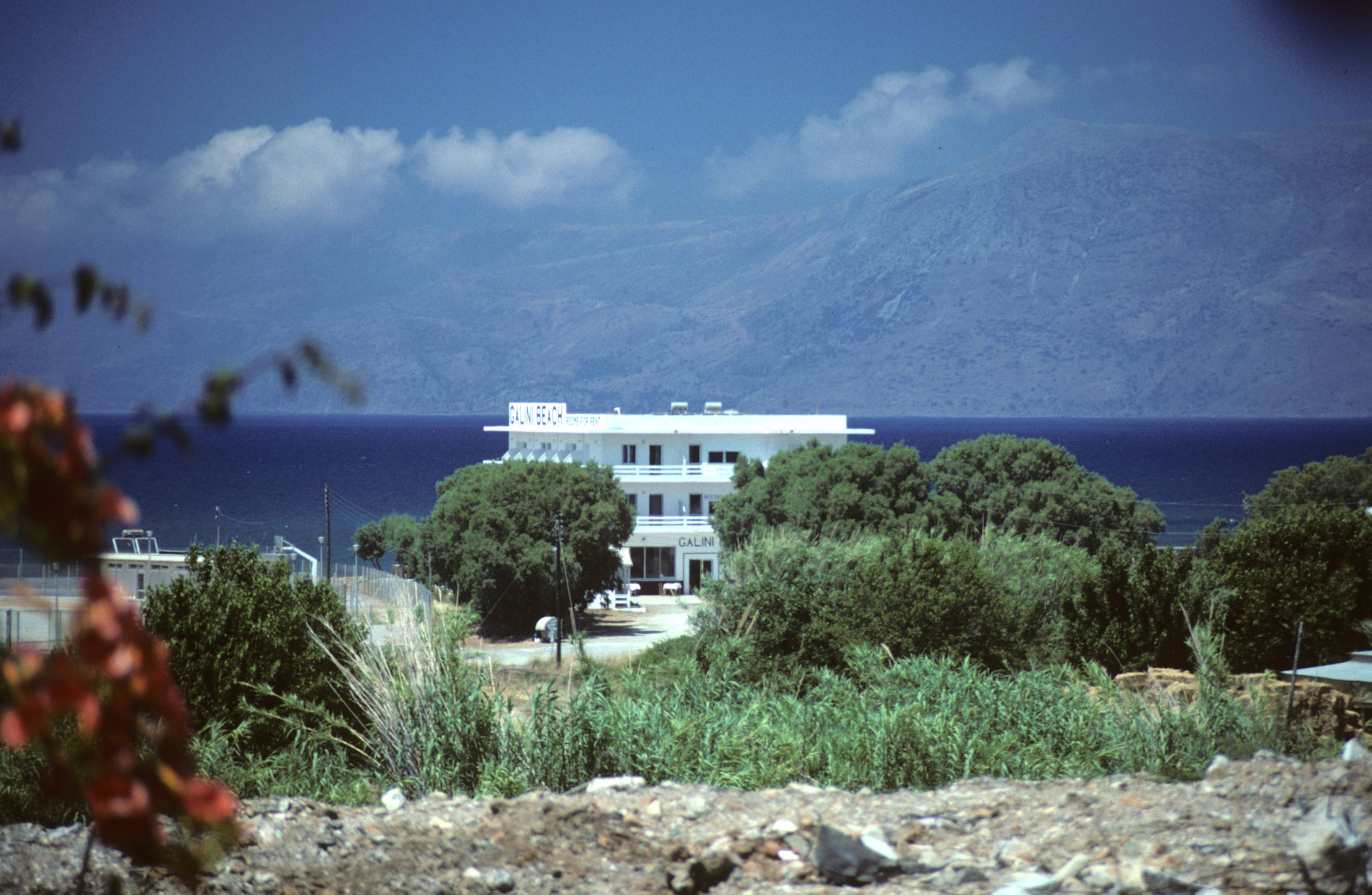
CRETE is the southernmost island of Europe, located at 35° latitude between the South Aegean and Libyan Sea, literally on the intersection of the three continents Africa, Asia and Europe. The island, 260 km long an 18 to 60 km wide, is the 5th largest in the Mediterranean. Crete is probably the wildest and most charismatic of the Aegean "Islands of Light" with breathtaking nature and magnificent history. She is home for about 600,000 people, 1 million sheep and goats and 24 million olive trees, Crete's treasure, covering the island with their distinct silver-green color.
There are about 7000 windmills, 3000 caves and 800 Byzantine chapels. 4 terrific mountain ranges with more than 60 mountains topping 2000 m cross the island, and while swimming in the Libyan Sea you can watch the snowcovered peak of Mt. Psiloritis at 2456 m. Samaria is the largest gorge of Europe - An 18 km descent from 1250 m to the sea through a fantastic landscape. The climate is mediterranean with hot, dry summers and mild, wet winters and an average of 300 sunny summerdays per year. Sandy beaches, fertile plains with grapes and citrus fruits and the smell of thyme in the mountains.
Crete is the origin of Europe - The beauty Europa, daughter of Phoenix, inspired the love of Zeus, the chief deity of ancient Greek religion. Disguised as a white bull, he carried her away from Phoenicia to Crete, where she became mother of King Minos. The freedom-loving Cretans, inventors of partisan warfare in the 13th century, had to defend their strategically important island against many occupants: Romans, Byzantines, Saracens, Venetians, Turks and even German troops. Only in 1913 the island was united with Greece. Crete has many famous children, among them Nikos Kazantzakis, writer of the famous novel "Alexis Zorbas". His gravestone at the highest point of Heraklion carries the epitaph "I hope for nothing, I fear nothing, I am free".
Crete became the second home for me and my wife Jutta and our great teacher. In the 1980s and 1990s we spent most summers there, explored the island off the beaten tracks and found many true friends. Our base was the beachfront hotel "Galini Beach", located at the apex of the great Bay of Kissamos in the extreme West and run by the family Sergentakis, who cared for us as if we were family members. The above photo shows a view of the hotel from S/W.
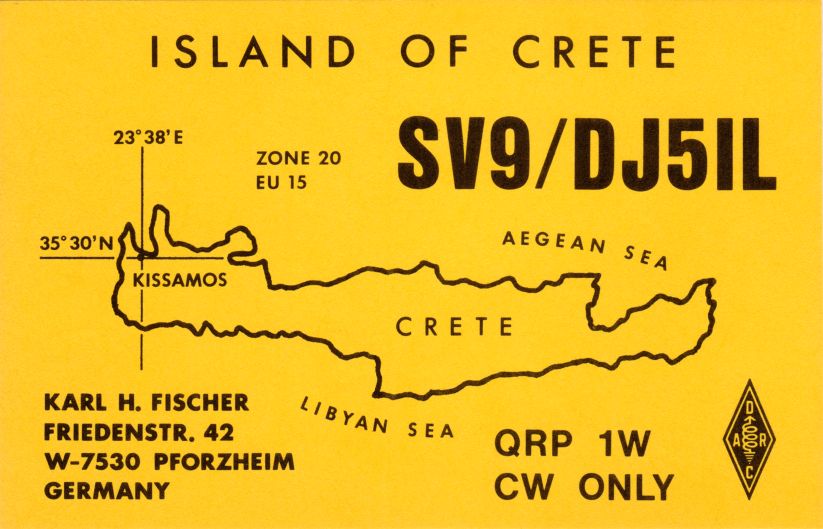
At that time I designed a built several tiny monoband 20m CW QRP transceivers with only 1 Watt output power, which I operated as SV9/DJ5IL from the "Galini Beach". We used to have the left or right corner-room to the sea on the second floor, and my antenna was a simple sloping half-wave dipole strung from our balcony down to a tamarisk tree at the beach. The perfect take-off over the open sea usually resulted in very good signal reports which I received mainly from European and Asian stations. Over the years I made thousands of QSOs with that setup, but one of them was most memorable ...
On 11 June 1996 shortly after 5 p.m. local time (15:00 UTC) we were back
home from our day-trip, with salt on our skin and sand in our hair and a bit
dozy, because we had too much wine and delicious seafood in a seaside tavern.
I made myself comfortable at the balcony table and called CQ around 14.030 MHz.
My usual and proven receiver design was a simple direct-conversion with a
harmonic ("Russian") mixer but without AGC, so the band sounded very quiet.
I took a sip of Ouzo and leaned back, watching the horizon where the azure
sky met the deep blue sea and in my imagination I saw radio amateurs in distant
countries listening to my faint signals right now, while my keyer did the CQ
job ... All of a sudden an ear-shattering strong CW signal appeared in my
headphones and jolted me out of my daydreams:
"KL7XX KL7XX K"
I was quite sure that some joker tried to fool me, but after a few seconds I asked "REALLY ?" and the strong signal immediately confirmed "YES". Still not convinced but in the mood to join the game, I gave him an estimated 599 report, my name and QTH and station details. Then that dubious KL7XX really came back to me, his name was Bill and my 1 Watt signal easily readable with 559 in his QTH Deadhorse / Alaska ...
I was mesmerized !
The ionosphere had given my flimsy 1 Watt signal, generated by a tiny transceiver which I designed and built myself from a hand full of cheap components, a short time slot to span almost 10,000 km over the polar path and the auroral zone ! For me, that's the thrill and fascination of real amateur radio at its best. When we arrived back home some weeks later, the direct QSL card from KL7XX was in the mail box - Bill remarked: "TNX 1st SV9 QSO", and on a second QSL about his QTH Deadhorse at 71° N / 148° W: "NOT THE END OF THE WORLD, BUT YOU CAN SEE IT FROM HERE."
"KL7XX KL7XX K"
I was quite sure that some joker tried to fool me, but after a few seconds I asked "REALLY ?" and the strong signal immediately confirmed "YES". Still not convinced but in the mood to join the game, I gave him an estimated 599 report, my name and QTH and station details. Then that dubious KL7XX really came back to me, his name was Bill and my 1 Watt signal easily readable with 559 in his QTH Deadhorse / Alaska ...
I was mesmerized !
The ionosphere had given my flimsy 1 Watt signal, generated by a tiny transceiver which I designed and built myself from a hand full of cheap components, a short time slot to span almost 10,000 km over the polar path and the auroral zone ! For me, that's the thrill and fascination of real amateur radio at its best. When we arrived back home some weeks later, the direct QSL card from KL7XX was in the mail box - Bill remarked: "TNX 1st SV9 QSO", and on a second QSL about his QTH Deadhorse at 71° N / 148° W: "NOT THE END OF THE WORLD, BUT YOU CAN SEE IT FROM HERE."
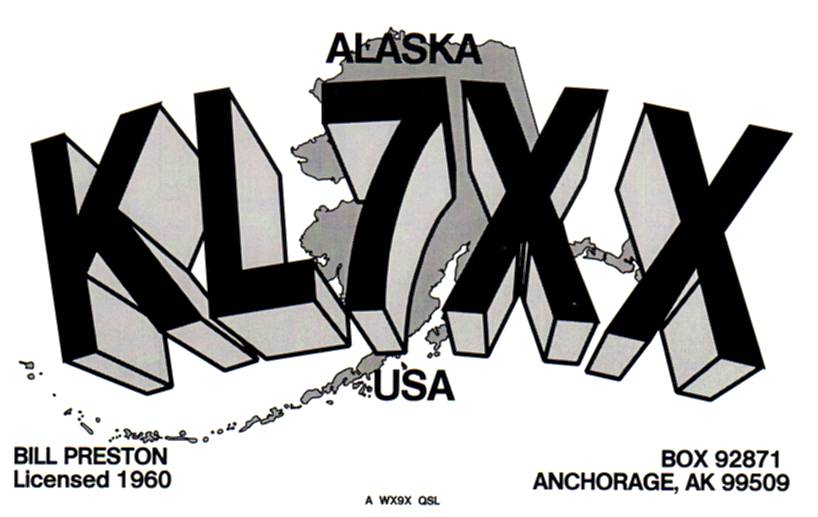
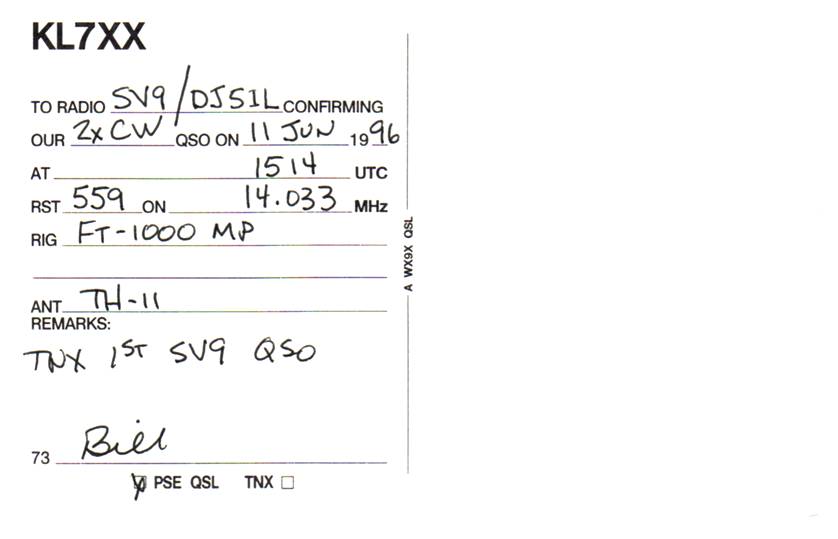
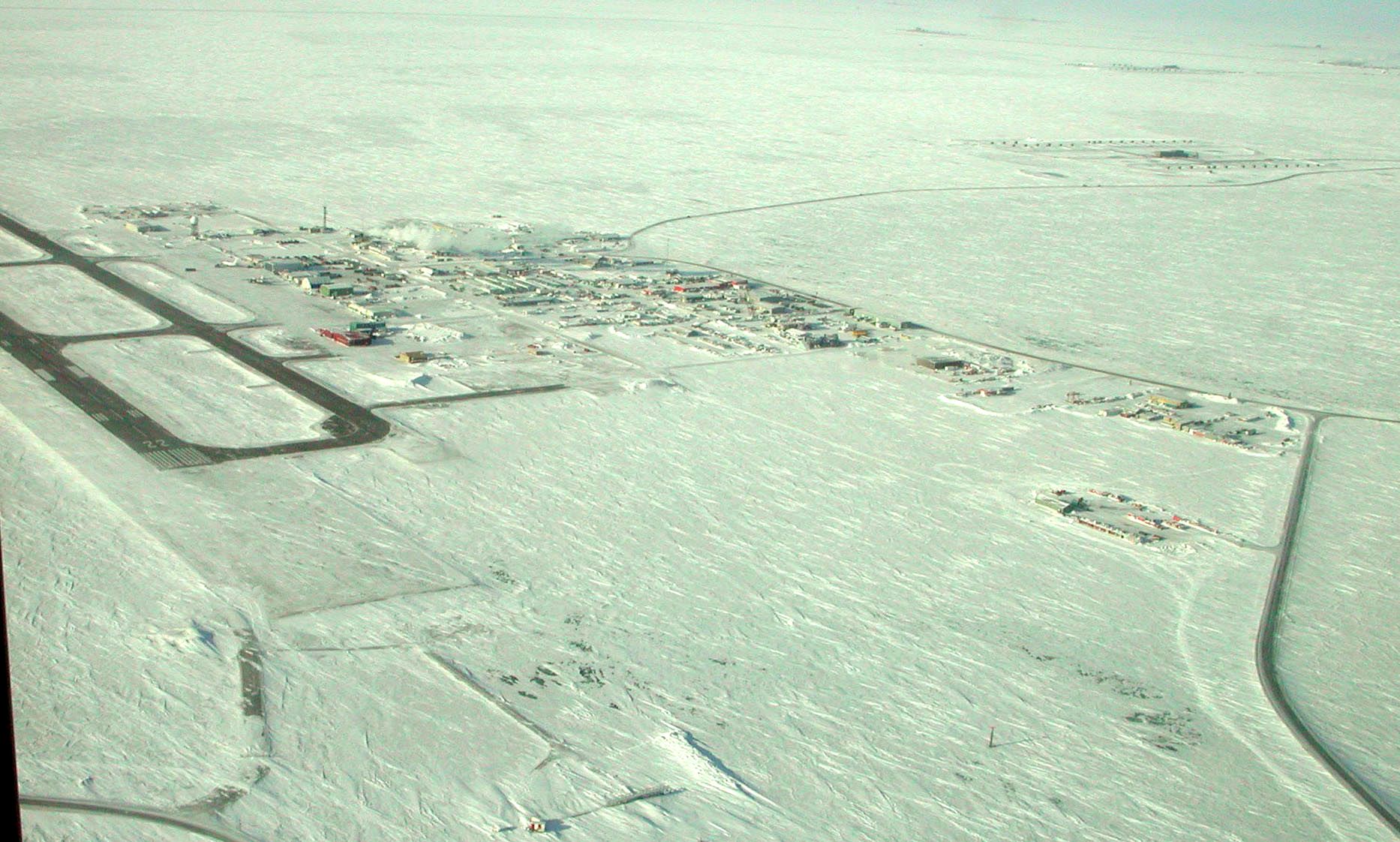
Aerial view of Deadhorse, the "weirdest named town in Alaska", in March 2007. The town consists mainly of facilities for the workers that operate at the nearby Prudhoe Bay Oil Field.
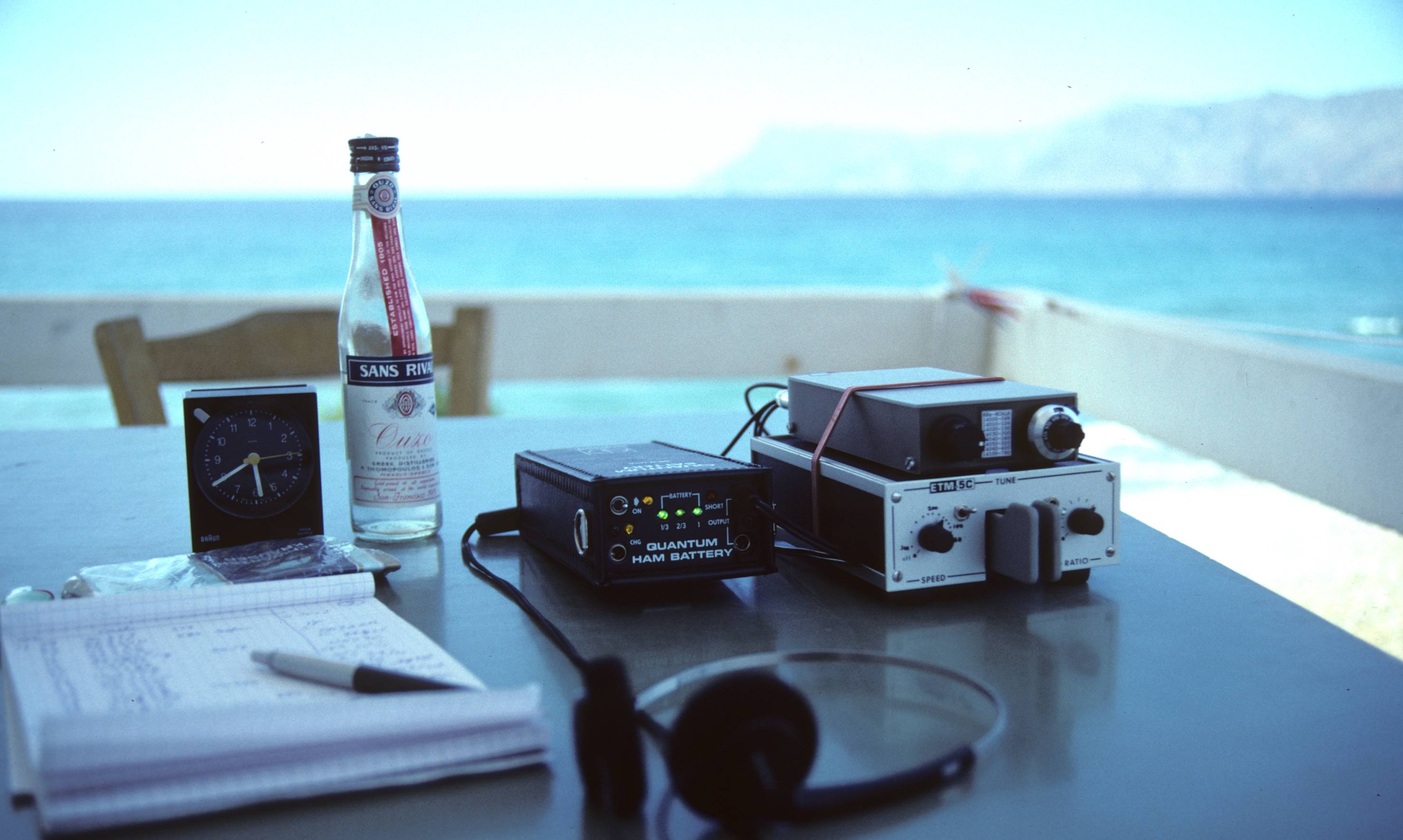
I took the above photo of my operating position on our balcony shortly after that memorable QSO, looking to N/E over the Bay of Kissamos. On the right side you can see my tiny tansceiver strapped onto the larger ETM-5C keyer.
In 1997 I took part in the CQ World Wide DX Contest Single Band 14 MHz CW and in 1998 in the CQ World Wide WPX Contest 3.5 MHz Low Power (World 4th High) from the "Galini Beach" with the special callsign J49IL. Depicted on my QSL card below is the lagoon of Cape Tigani, an ancient pirate bay on the West coast of Crete.
